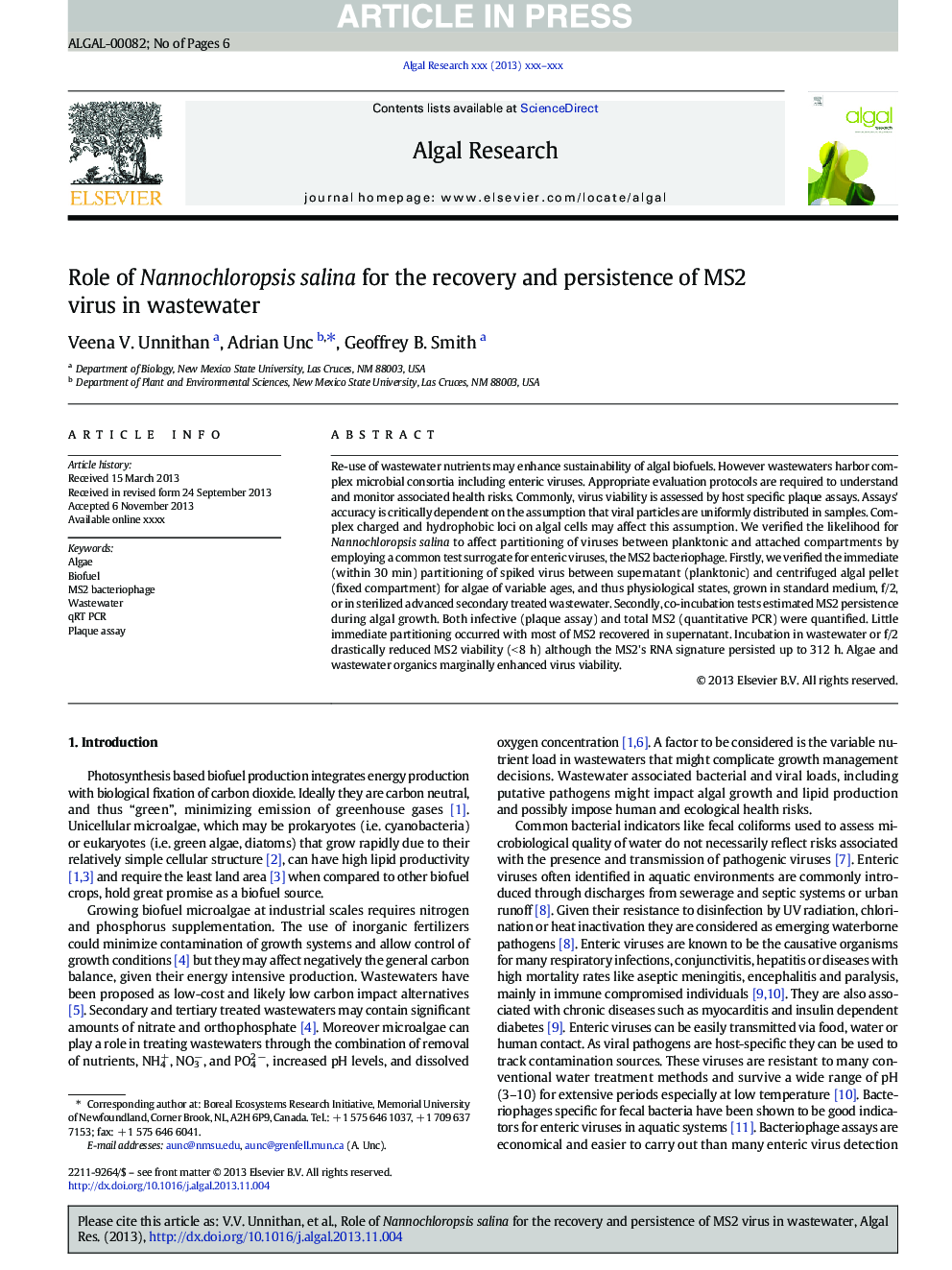| Article ID | Journal | Published Year | Pages | File Type |
|---|---|---|---|---|
| 8088481 | Algal Research | 2014 | 6 Pages |
Abstract
Re-use of wastewater nutrients may enhance sustainability of algal biofuels. However wastewaters harbor complex microbial consortia including enteric viruses. Appropriate evaluation protocols are required to understand and monitor associated health risks. Commonly, virus viability is assessed by host specific plaque assays. Assays' accuracy is critically dependent on the assumption that viral particles are uniformly distributed in samples. Complex charged and hydrophobic loci on algal cells may affect this assumption. We verified the likelihood for Nannochloropsis salina to affect partitioning of viruses between planktonic and attached compartments by employing a common test surrogate for enteric viruses, the MS2 bacteriophage. Firstly, we verified the immediate (within 30Â min) partitioning of spiked virus between supernatant (planktonic) and centrifuged algal pellet (fixed compartment) for algae of variable ages, and thus physiological states, grown in standard medium, f/2, or in sterilized advanced secondary treated wastewater. Secondly, co-incubation tests estimated MS2 persistence during algal growth. Both infective (plaque assay) and total MS2 (quantitative PCR) were quantified. Little immediate partitioning occurred with most of MS2 recovered in supernatant. Incubation in wastewater or f/2 drastically reduced MS2 viability (<Â 8Â h) although the MS2's RNA signature persisted up to 312Â h. Algae and wastewater organics marginally enhanced virus viability.
Related Topics
Physical Sciences and Engineering
Energy
Renewable Energy, Sustainability and the Environment
Authors
Veena V. Unnithan, Adrian Unc, Geoffrey B. Smith,
